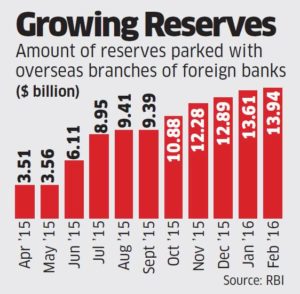 In the Present era, the market is booming up so every company wants to take the opportunity to capitalize the same more from market and want to get maximum benefits out of that.
In the Present era, the market is booming up so every company wants to take the opportunity to capitalize the same more from market and want to get maximum benefits out of that.
Listing will help them enter capital markets (SME Exchange) and finally to graduate on to mainboard. The SME platform provides opportunity to entrepreneurs to raise equity capital for growth and expansion. It also provides immense opportunity for investors to identify and invest in good SMEs at an early stage.
Let’s see what are the ways available for companies to avail such benefits.
What is SME?
SME means Small and medium-sized enterprises or small and medium-sized businesses (SMBs) are businesses whose personnel numbers fall below certain limits.
What is SME Exchange?
“SME exchange” means a trading platform of a recognized stock exchange having nationwide trading terminals permitted by the Board to list the specified securities issued in accordance with this Chapter and includes a stock exchange granted recognition for this purpose but does not include the Main Board”.
So now question that arises is how those benefits can be obtained…. the simplest answer is by listing in SME Platform.
What are the Criteria for Listing?
- Incorporation
The Company shall be incorporated under the Companies Act, 1956 or 2013.
- Financials
Post Issue Paid up Capital
The post-issue paid up capital of the company shall be at least Rs. 3 crores.
- Net-worth
Net worth (excluding revaluation reserves) of at least Rs. 3 crores, as per the latest audited financial results.
- Net Tangible Assets
At least Rs. 3 crores as per the latest audited financial results.
- Track Record
Distributable profits in terms of Section 123 of the Companies Act 2013 for at least two years out of immediately preceding three financial years (each financial year has to be a period of at least 12 months). Extraordinary income will not be considered for the purpose of calculating distributable profits. Or
The net worth shall be at least Rs. 5 crores.
- Other Requirements
It is mandatory for a company to have a website.
It is mandatory for the company to facilitate trading in demat securities and enter into an agreement with both the depositories.
There should not be any change in the promoters of the company in preceding one year from date of filing the application to Different Exchange for listing under SME segment.
- Disclosures
A certificate from the applicant company / promoting companies stating the following
- a) ” The Company has not been referred to the Board for Industrial and Financial Reconstruction (BIFR).”
Note: Cases where company is out of BIFR is allowed.
- b) There is no winding up petition against the company, which has been admitted by the court or a liquidator has not been appointed.
- Migration from Different Exchange SME Platform to the Main Board
The companies seeking migration to Main Board of Different Exchange should satisfy the eligibility criteria It is mandatory for the company to be listed and traded on the Different Exchange SME Platform for a minimum period of two years and then they can migrate to the Main Board as per the guidelines specified by SEBI vide their circular dated 18th May 2010 and as per the procedures laid down in the ICDR guidelines Chapter X B.
What are the Benefits of Listing in SME
1. Easy access to Capital
Different Exchange SME provides an avenue to raise capital through equity infusion for growth oriented SME’s.
2. Enhanced Visibility and Prestige
The SME’s benefit by greater credibility and enhanced financial status leading to demand in the company’s shares and higher valuation of the company.
3. Encourages Growth of SMEs
Equity financing provides growth opportunities like expansion, mergers and acquisitions thus being a cost effective and tax efficient mode.
4. Ensures Tax Benefits
In case of listed securities Short Term Gains Tax is 15% and there is absolutely no Long Term Capital Gains Tax.
5. Enables Liquidity for Shareholders
Equity financing enables liquidity for shareholders, provides growth opportunities like expansion, mergers and acquisitions, thus being a cost effective and tax efficient mode.
6. Equity financing through Venture Capital
Provides an incentive for Venture Capital Funds by creating an Exit Route and thus reducing their lock in period.
7. Efficient Risk Distribution
Capital Markets ensure that the capital flows to its best uses and that riskier activities with higher payoffs are funded.
8. Employee Incentives
Employee Stock Options ensures stronger employee commitment, participation and recruitment incentive.
How are the Listing Procedures done?
This is as simple as we understand & execute the following steps!!!
Planning
The Issuer Company consults and appoints the Merchant Banker/s in an advisory capacity.
Preparation
The Merchant Banker prepares the documentation for filing after, conducting due diligence regarding the Company i.e checking the documentation including all the financial documents, material contracts, government approvals, Promoter details, planning the IPO structure, share issuances, and financial requirements
Process
Application procedure:
Submission of DRHP/Draft Prospectus – These documents are prepared by the Merchant Banker and filed with the Exchange as well as with SEBI as per requirements.
Verification & Site Visit – Different Exchange verifies the documents and processes the same. A visit to the company’s site shall be undertaken by the Exchange official .The Promoters are called for an interview with the Listing Advisory Committee.
Approval – Different Exchange issues an In-Principle approval on the recommendation of the Committee, provided all the requirements are compiled by the Issuer Company.
Filing of RHP/Prospectus – Merchant Banker files these documents with the ROC indicating the opening and closing date of the issue.
Once approval is received from the ROC/MCA, they intimate the Exchange regarding the opening dates of the issue along with the required documents.
Public Offering
The Initial Public Offer opens and closes as per schedule. After the closure of IPO, the Company submits the documents as per the checklist to the Exchange for finalization of the basis of allotment.
Post Listing
Different Exchange finalizes the basis of allotment and issues the notice regarding Listing and Trading.
Any Guidelines for Listing?
Yes the Company has to follow the below guidelines.
Capital
The post issue face value capital should not exceed Rs. Twenty-five crores.
Trading lot size
The minimum application and trading lot size shall not be less than Rs. 1,00,000/- .
The minimum depth shall be Rs. 1,00,000/- and at any point of time it shall not be less than Rs. 1,00,000/-.
The investors holding with less than Rs. 1,00,000/- shall be allowed to offer their holding to the Market Maker in one lot.
However in functionality, the market lot will be subject to revival after a stipulated time.
Participants
The existing Members of the Exchange shall be eligible to participate in SME Platform.
Underwriting
The issues shall be 100% underwritten and Merchant Bankers shall underwrite 15% in their own account.
So at last we can say that, if you want to increase the reputation of your company in the developing Countries like India, then you should have to register your Company in SME Platform because ultimately your company gets reputation as it is traded in Exchange Platform so Goodwill of the company also increases and ultimately you achieve your profit.
This is best platform provided to the company for those companies who have not much of Paid Up Capital and also are less reputed but by registering in SME Platform, the company not only gets reputation all over India at large but also the company gets Profit by availing Tax benefits up to some extent. Thus,Small companies can now think big.
So considering the above fact, companies should have to opt for this option and after few years, the company would also be transferred from SME Platform to Main Board, hence your company is considered as the same as other reputed companies.
So by considering the Current Market Scenario every Private Company as well as Unlisted Public Company has to think on this matter and work accordingly. Though this facility has been available since long but few of them were able to grab this opportunity. Now it’s time to rethink about this opportunity.
SME Capital Markets so far
Growth Opportunities for SMEs







